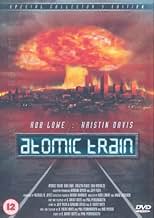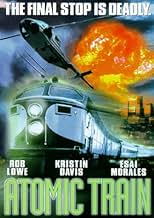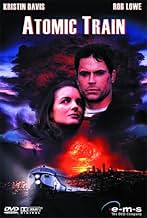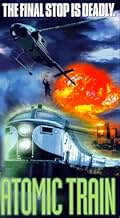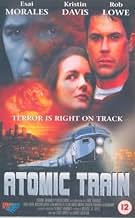PUNTUACIÓN EN IMDb
4,7/10
2,4 mil
TU PUNTUACIÓN
Un tren lleno de artefactos atómicos amenaza con destruir la ciudad de Denver. John Serger (un agente de la NTSB) tiene que evitar que esto ocurra.Un tren lleno de artefactos atómicos amenaza con destruir la ciudad de Denver. John Serger (un agente de la NTSB) tiene que evitar que esto ocurra.Un tren lleno de artefactos atómicos amenaza con destruir la ciudad de Denver. John Serger (un agente de la NTSB) tiene que evitar que esto ocurra.
- Premios
- 1 premio y 1 nominación en total
Explorar episodios
Argumento
¿Sabías que...?
- CuriosidadesAt one point the TV reporter refers to the train's braking system as "hydraulic brakes". This is also emphasized when you see "brake fluid" dripping from a hose. If they did an ounce of research, they would know that trains operate with a compressed air braking system. No train in existence uses hydraulic brakes. Also when two air hoses bust open, the train automatically goes into emergency, and the movie would've been 10 minutes long.
- PifiasThe engineer on the train states that the "throttle is stuck again." Federal Railway Administration and company rules would require a locomotive with a sticking throttle to be removed from service.
- ConexionesEdited into Tren mortal (Death Train) (2003)
Reseña destacada
Working for a railroad in train operations as an engineer, I know how trains work. Several things are wrong with this movie and personally it surpasses what I know as being just plain stupid to reach a new plateau of stupidity and retardation of normal people which I've never known before. For example:
a - when a brake pipe hose between two cars breaks its connection, the rapid drop in break pipe pressure will cause a train to immediately go into emergency and stop. (in the movie they were trying to put it back together to try to stop the train)
b - when a train has electrical problems, such as even a weak battery, safety systems will cause an emergency application of the brakes. This did not happen in the movie.
c - I have never in all my railroading days seen a boxcar with railings on the side and extruding steel for a footwalk to gain access to the door.
d - when the train was creeping at walking speed at the top of the mountain, the people could have EASILY walked to the cars and tied hand brakes stopping the train. Even if all the hand brakes failed (which is an impossibility due to required initial terminal testing on the trains brakes before departure from a yard) a large limb from a nearby tree could have been used to stop the train. *I've done it while working in the yards using a 2x4*
e - when the engine was attached to the rear end and trying to pull the train to a stop, use of dynamic brakes couldn't create so much "strain" as to break a knuckle (the coupling mechanism in a coupler) as depicted in the movie. The knuckle part of a coupler is solid steel, and given the circumstances would be EXTREMELY difficult to break.
f - the crew on the caboose had control of the emergency brake valve on the caboose, and could have placed the train into emergency from the rear.
a - when a brake pipe hose between two cars breaks its connection, the rapid drop in break pipe pressure will cause a train to immediately go into emergency and stop. (in the movie they were trying to put it back together to try to stop the train)
b - when a train has electrical problems, such as even a weak battery, safety systems will cause an emergency application of the brakes. This did not happen in the movie.
c - I have never in all my railroading days seen a boxcar with railings on the side and extruding steel for a footwalk to gain access to the door.
d - when the train was creeping at walking speed at the top of the mountain, the people could have EASILY walked to the cars and tied hand brakes stopping the train. Even if all the hand brakes failed (which is an impossibility due to required initial terminal testing on the trains brakes before departure from a yard) a large limb from a nearby tree could have been used to stop the train. *I've done it while working in the yards using a 2x4*
e - when the engine was attached to the rear end and trying to pull the train to a stop, use of dynamic brakes couldn't create so much "strain" as to break a knuckle (the coupling mechanism in a coupler) as depicted in the movie. The knuckle part of a coupler is solid steel, and given the circumstances would be EXTREMELY difficult to break.
f - the crew on the caboose had control of the emergency brake valve on the caboose, and could have placed the train into emergency from the rear.
- shostetler
- 23 ene 2001
- Enlace permanente
Selecciones populares
Inicia sesión para calificar y añadir a tu lista para recibir recomendaciones personalizadas
- How many seasons does Atomic Train have?Con tecnología de Alexa
Detalles
Contribuir a esta página
Sugerir un cambio o añadir el contenido que falta

Principal laguna de datos
By what name was Atomic Train (1999) officially released in Canada in English?
Responde

